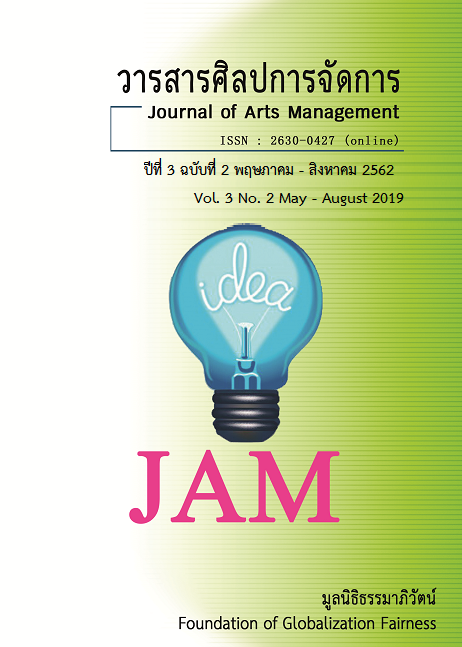The Effectiveness of Prevention of Postpartum Hemorrhage, According to the Sampharn Model, Samphran Hospital, Nakhon Pathom Province
Main Article Content
Abstract
This study presents the effectiveness of nursing process adjustments to increase the effectiveness of the assessment and diagnosis of the risk of postpartum hemorrhage, to increase the potential in order to prevent postpartum hemorrhage including the effectiveness of care during the immediate postpartum hemorrhage from using the Sampran model approach with the color symbol Maternity care standards postpartum hemorrhage and Poster Job Distribution as a component. This study is Quasi Experiment Research (Paired-Samples T test) ; The sample groups are from the coincident random by selected from 30 Burmese pregnant women who come for service in the labour room work section, Sampran Hospital, Nakhon Pathom Province. Data collection by record form created by the researcher. The results showed that SAMPRAN MODEL approach is effective in helping to increase the effectiveness of the assessment and diagnosis of risk for postpartum hemorrhage. It also helps reduce the amount of postpartum hemorrhage and prevent the occurrence of violence from blood loss (Severe PPH). It can be concluded that Sampran Model is to adjust the care process for the maternity to be safe from complications after birth and it is suitable for the context of community hospitals without cost and possible to see real results.
Article Details
Views and opinions appearing in articles in the Journal of Arts of Management It is the responsibility of the author of the article. and does not constitute the view and responsibility of the editorial team I agree that the article is copyright of the Arts and Management Journal.
References
พิกุล บัณฑิตพานิชชา และ นงลักษณ์ พลแสน. (2560). การพัฒนาระบบการพยาบาลในการป้องกันภาวะตกเลือดหลังคลอด. วารสารการแพทย์โรงพยาบาลศรีสะเกษ สุรินทร์ บุรีรัมย์, 32(2), 131-144.
เฟื่องลดา ทองประเสริฐ. (2557). ตำราภาวะฉุกเฉินทางสูติ – นรีเวช. เชียงใหม่: มหาวิทยาลัยเชียงใหม่.
โฉมพิลาศ จงสมชัย. (2553). ภาวะตกเลือดหลังคลอด Postpartum Hemorrhage. ขอนแก่น: มหาวิทยาลัยขอนแกน
โรงพยาบาลสามพราน. (2561). Clinical Tracer/ Clinical Quality Summary: การดูแลรักษาผู้คลอดเพื่อป้องกันภาวะตกเลือดหลังคลอด (ภาวะตกเลือดหลังคลอด). นครปฐม: ศูนย์พัฒนาคุณภาพ โรงพยาบาลสามพราน.
ณฐนนท์ ศิริมาศ. (2557). การพัฒนาระบบการดูแลหญิงตั้งครรภ์ในการป้องกันภาวะตกเลือดหลังคลอดในโรงพยาบาลสกลนคร. วารสารการพยาบาลและการดูแลสุขภาพ, 32(2), 37-46.
วรรณภา ปราบพาล และคณะ. (2556). การพัฒนากระบวนการคัดกรองความเสี่ยงต่อภาวะตกเลือดหลังคลอด โรงพยาบาลบึงโขงหลง. บึงกาฬ: โรงพยาบาลบึงโขงหลง.
ศิริวรรณ วิเลิศ และคณะ. (2559). สถานการณ์และปัจจัยที่มีความสัมพันธ์กับการตกเลือด หลังคลอดในมารดาคลอดทางช่องคลอด ในหอผู้ป่วย สูติกรรมสามัญ โรงพยาบาลนพรัตนราชธานี. วารสารพยาบาลสภากาชาดไทย, 9(2), 179-190.
สำนักงานปลัดกระทรวงสาธารณสุข. (2557). การรายงานผลตามเป้าหมายการพัฒนาแห่งสหัสวรรษ(MDGs) ด้านสุขภาพของประเทศไทย ฉบับที่ 3. นนทบุรี: สำนักนโยบายและยุทธศาสตร์ สำนักงานปลัดกระทรวงสาธารณสุข.
WHO. (2014). Trends in Maternal Mortality. Switzerland: WHO.
